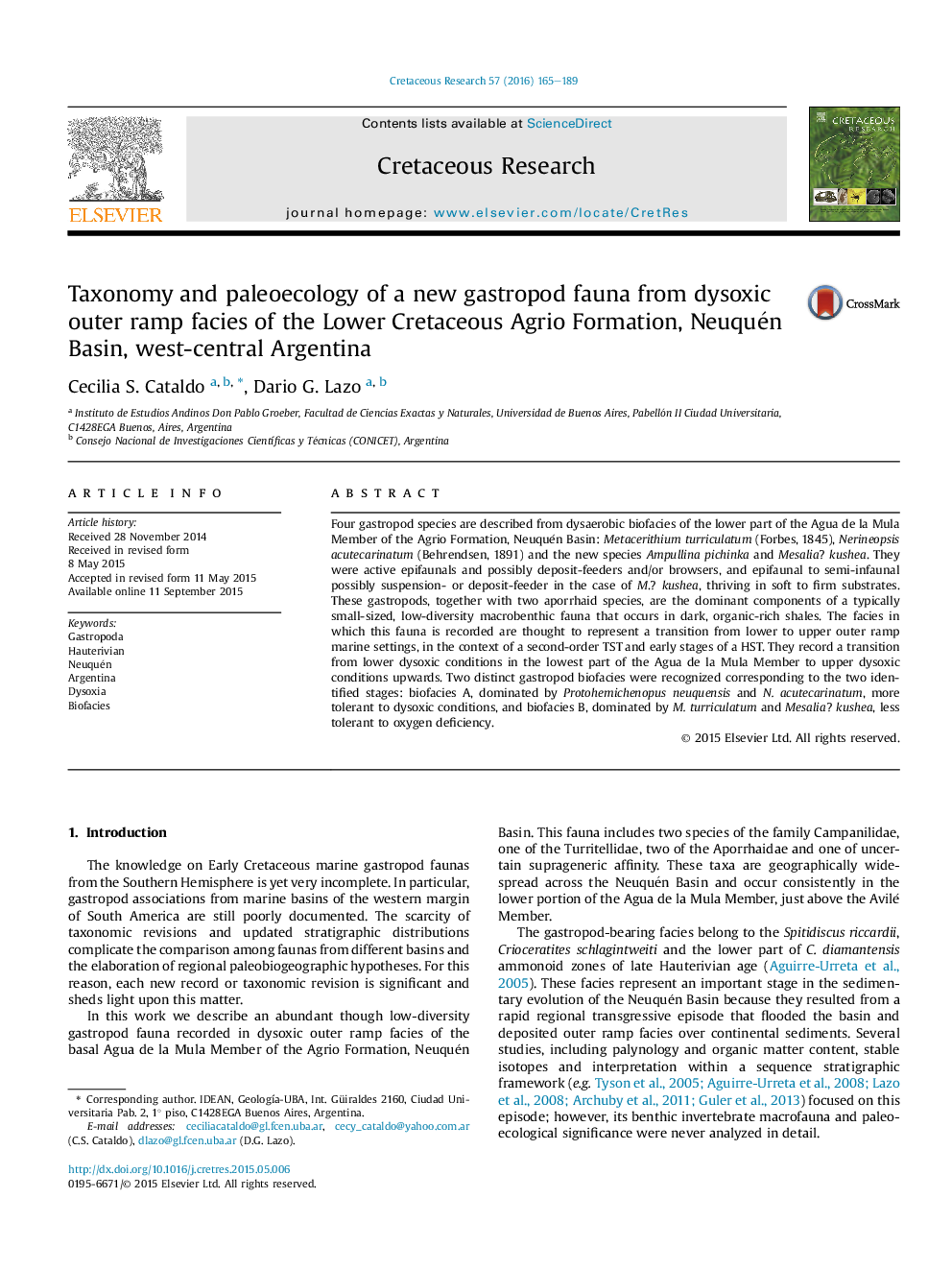| کد مقاله | کد نشریه | سال انتشار | مقاله انگلیسی | نسخه تمام متن |
|---|---|---|---|---|
| 4746842 | 1642066 | 2016 | 25 صفحه PDF | دانلود رایگان |

• We describe two new gastropod species: Ampullina pichinka and Mesalia? kushea.
• Six gastropod species dominate a small-sized, low-diversity fauna from dark shales.
• Facies were deposited in lower to upper outer ramp marine settings.
• A transition from lower to upper dysoxic conditions is recorded.
• We recognize two gastropod biofacies linked to two stages of dysoxia.
Four gastropod species are described from dysaerobic biofacies of the lower part of the Agua de la Mula Member of the Agrio Formation, Neuquén Basin: Metacerithium turriculatum (Forbes, 1845), Nerineopsis acutecarinatum (Behrendsen, 1891) and the new species Ampullina pichinka and Mesalia? kushea. They were active epifaunals and possibly deposit-feeders and/or browsers, and epifaunal to semi-infaunal possibly suspension- or deposit-feeder in the case of M.? kushea, thriving in soft to firm substrates. These gastropods, together with two aporrhaid species, are the dominant components of a typically small-sized, low-diversity macrobenthic fauna that occurs in dark, organic-rich shales. The facies in which this fauna is recorded are thought to represent a transition from lower to upper outer ramp marine settings, in the context of a second-order TST and early stages of a HST. They record a transition from lower dysoxic conditions in the lowest part of the Agua de la Mula Member to upper dysoxic conditions upwards. Two distinct gastropod biofacies were recognized corresponding to the two identified stages: biofacies A, dominated by Protohemichenopus neuquensis and N. acutecarinatum, more tolerant to dysoxic conditions, and biofacies B, dominated by M. turriculatum and Mesalia? kushea, less tolerant to oxygen deficiency.
Journal: Cretaceous Research - Volume 57, January 2016, Pages 165–189